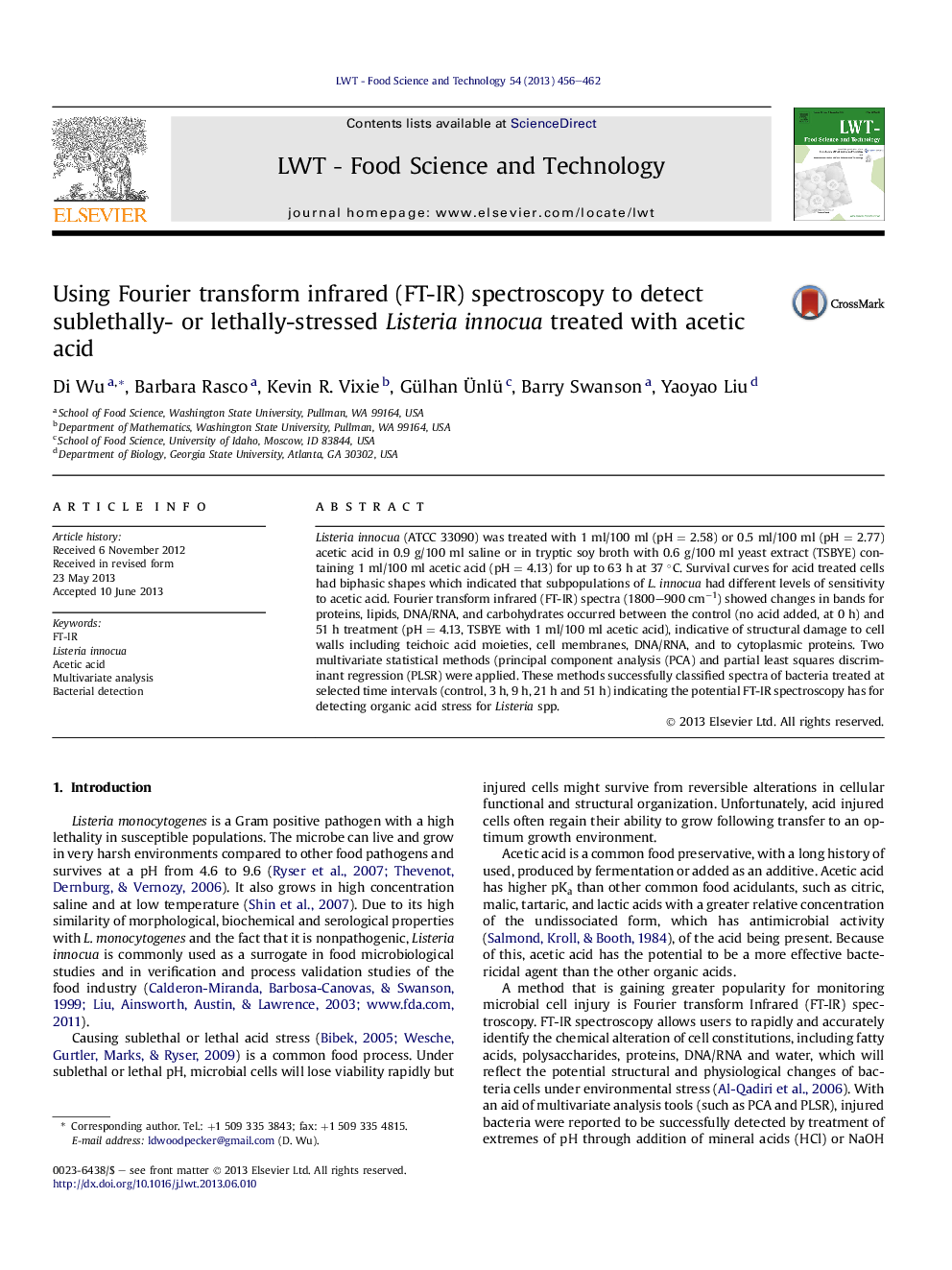| Article ID | Journal | Published Year | Pages | File Type |
|---|---|---|---|---|
| 6404594 | LWT - Food Science and Technology | 2013 | 7 Pages |
â¢We treated Listeria innocua with selected concentrations of acetic acid.â¢We examined cell structure change of treated bacteria by FT-IR spectroscopy.â¢Spectra for proteins, lipids, DNA/RNA, and carbohydrates were changed by treatment.â¢Cell walls, cell membranes, DNA/RNA, and cytoplasmic proteins were damaged by acid.
Listeria innocua (ATCC 33090) was treated with 1 ml/100 ml (pH = 2.58) or 0.5 ml/100 ml (pH = 2.77) acetic acid in 0.9 g/100 ml saline or in tryptic soy broth with 0.6 g/100 ml yeast extract (TSBYE) containing 1 ml/100 ml acetic acid (pH = 4.13) for up to 63 h at 37 °C. Survival curves for acid treated cells had biphasic shapes which indicated that subpopulations of L. innocua had different levels of sensitivity to acetic acid. Fourier transform infrared (FT-IR) spectra (1800-900 cmâ1) showed changes in bands for proteins, lipids, DNA/RNA, and carbohydrates occurred between the control (no acid added, at 0 h) and 51 h treatment (pH = 4.13, TSBYE with 1 ml/100 ml acetic acid), indicative of structural damage to cell walls including teichoic acid moieties, cell membranes, DNA/RNA, and to cytoplasmic proteins. Two multivariate statistical methods (principal component analysis (PCA) and partial least squares discriminant regression (PLSR) were applied. These methods successfully classified spectra of bacteria treated at selected time intervals (control, 3 h, 9 h, 21 h and 51 h) indicating the potential FT-IR spectroscopy has for detecting organic acid stress for Listeria spp.
